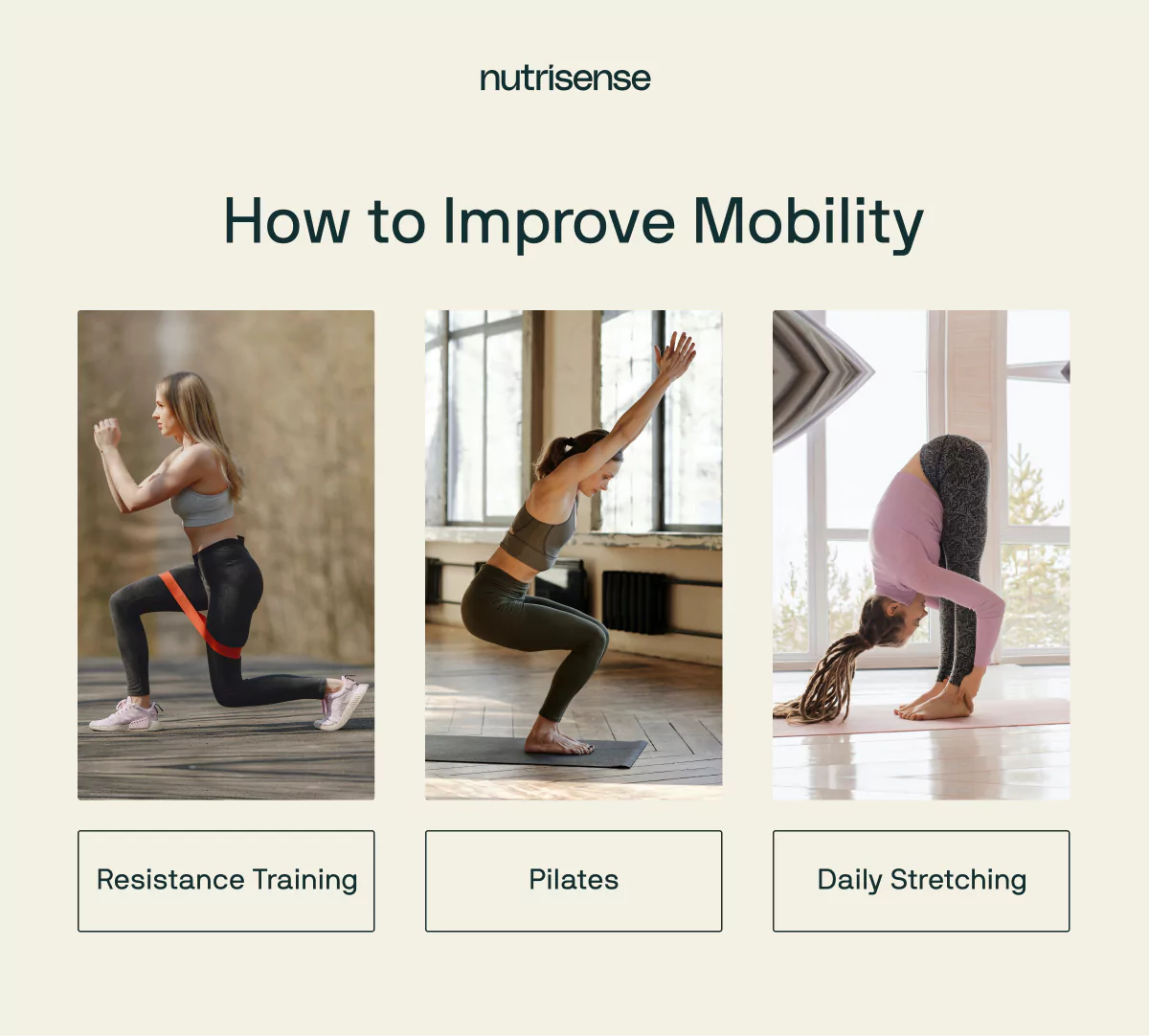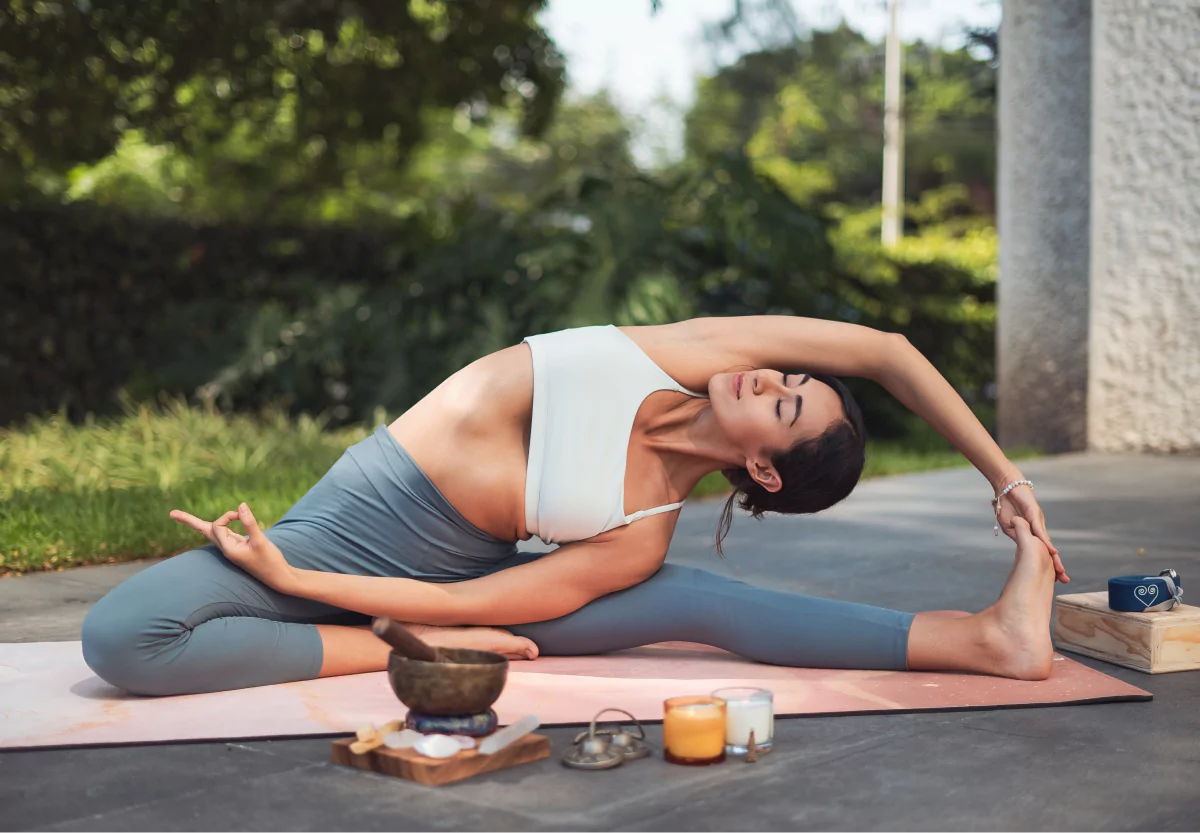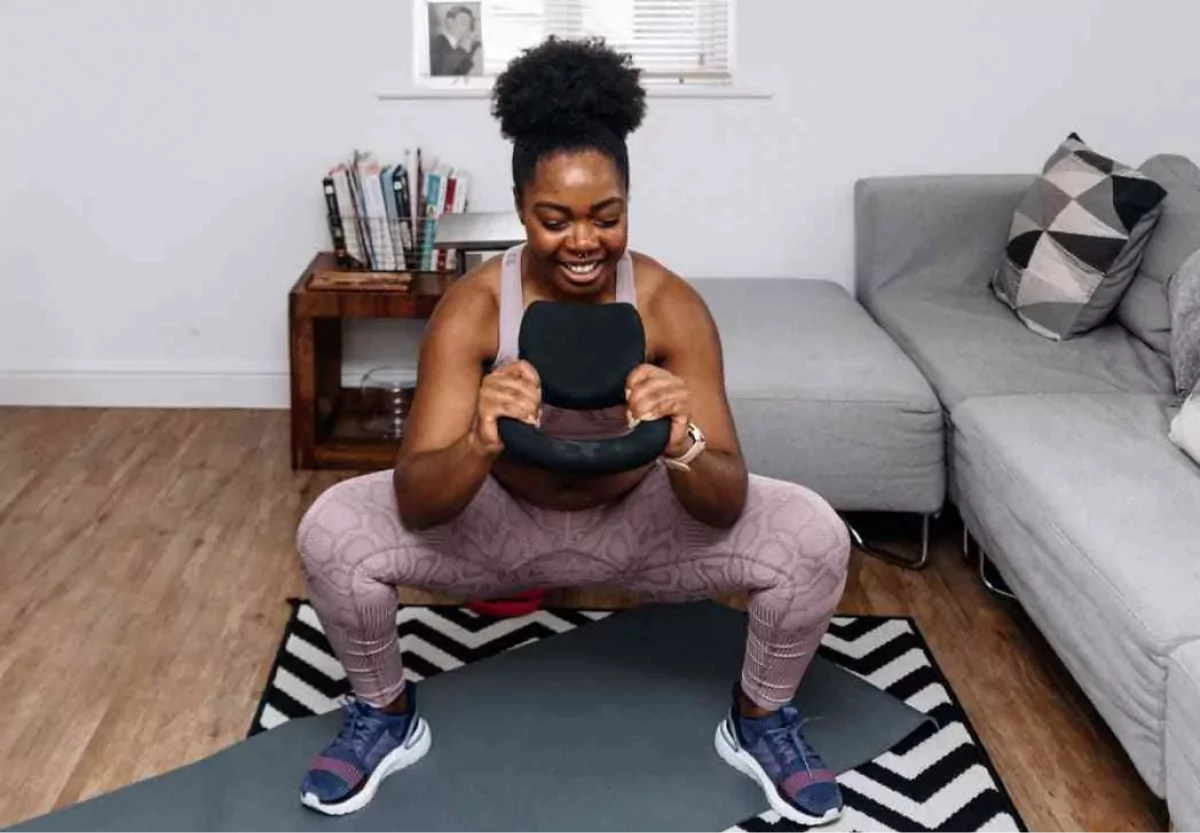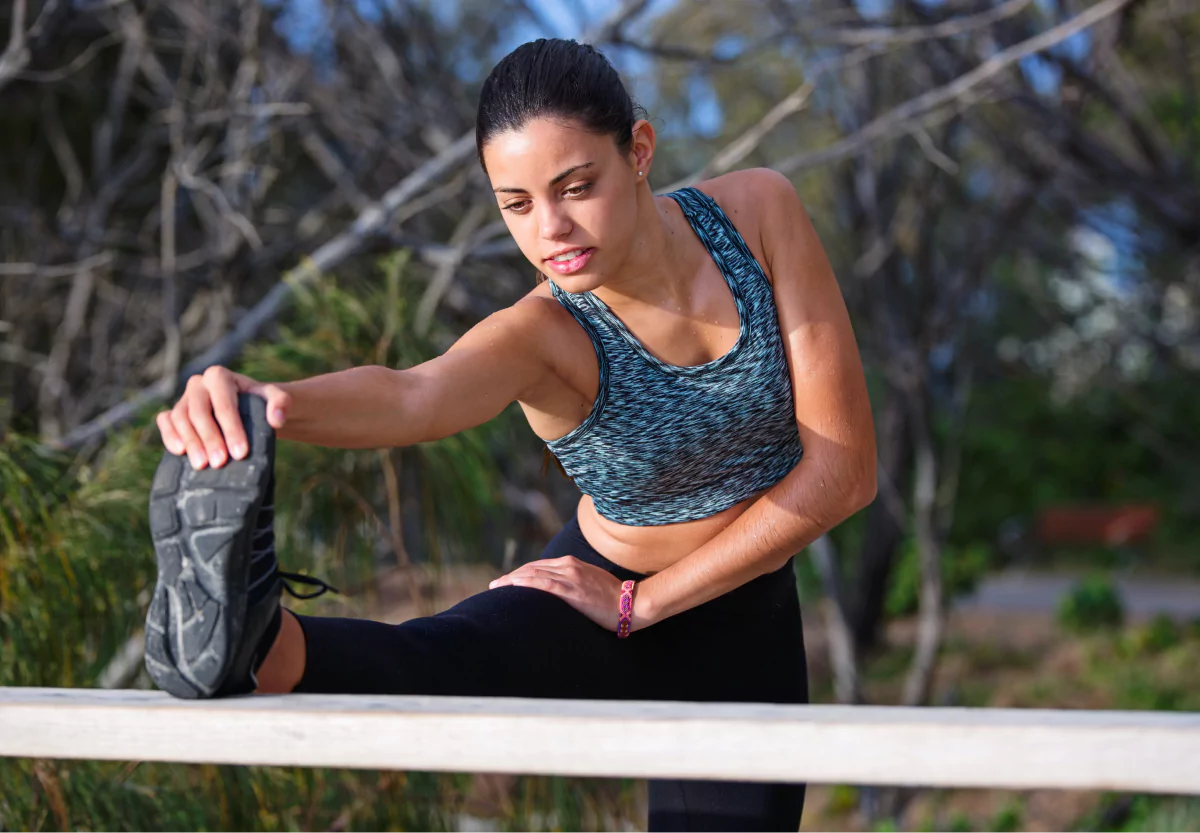The Dynamic Duo: Understanding the Difference Between Mobility vs. Flexibility
.webp)
Key Takeways
All sorts of words come up repeatedly in health, exercise, and fitness circles: strength, balance, speed, endurance—the list goes on. But when it comes to two such words in particular—namely, mobility and flexibility—the line between the two can seem blurry at times.
Are mobility and flexibility really two different things? After all, they do have a good deal of overlap. Is it really necessary to think of them separately?
As we take a closer look at the differences between mobility and flexibility, we’ll find that not only are they indeed distinct from one another, but they’re also both immeasurably important to health. Let’s break down the key differences between each one and how you can prioritize them.
What is Mobility?

Generally speaking, mobility refers to the combined range of motion for all the different joints involved in everyday, or athletic, movements and activities. It’s measured by how well you can move your body in controlled motions between a range of different positions.
For example, to move your body forward, a certain amount of torque must be produced in the ankle joint. That could not happen without corresponding ankle muscle strength, and the movement would be hampered by insufficient ankle joint flexibility.
One of the challenges of talking about mobility or flexibility on its own, is that these facets, as well as many others, are always working together to create and control motion. That’s why separating them out and treating them as isolated components of bodily function can be a bit difficult.
Benefits of Mobility Training
For starters, one clear and very important benefit of mobility work is enhanced mobility. But what does that mean, really? Well, for one, it means a wider range of motion in the joints involved in different movements, whether those performed in everyday life or in an athletic context.
Beyond just expanding range of motion in the joints, enhanced mobility can mean:
- Greater ease and control when manipulating the joints to perform various motions
- Significantly reducing the risk of injury during periods of physical activity
- Improved static balance and posture
Examples of Mobility Exercises and Techniques

You don’t have to look far to find an exercise for training mobility. A whole array of different exercises and activities can be used to engage and cultivate better mobility.
Here are a couple examples that might be worth giving a shot to improve some of the different components of mobility.
Resistance Training (Free Weight or Machine)
Studies show that resistance training may have a significant positive effect on joint mobility and range of motion. Many of the movement patterns in free-weight or machine-based strength training resemble those of stretching routines, only with the addition of external weight.
As opposed to bodyweight exercises, which can be great for beginners, weight training exercises allow certain joints to safely exceed the range of motion afforded by bodyweight exercises. This can also lead to improved joint health.
Pilates
Similarly to weight-based resistance training, pilates may prove beneficial to overall mobility. In fact, it may also be helpful among advanced-age populations, helping to prevent some of the loss in mobility that occurs with age, as well as restoring a greater degree of bodily control.
What is Flexibility?

Flexibility, on the other hand, ability of a muscle to safely flex, or stretch. It determines how far muscles, connective tissue, and tendons around a joint can extend and stay extended.
It may help to think of joint muscles as resistance bands acting upon the joint—if the resistance is too high, which is to say, if the muscles are too stiff and inflexible, then movement in the joint will be restricted. Enhancing your flexibility is like loosening the tension on the bands—it would make movement freer and easier, allowing the joint to extend further.
Benefits of Flexibility Training
One of the key benefits of cultivating flexibility is an increased range of motion in the joints. You’d be correct to point out that this, too, was previously listed as a benefit of training mobility. In fact, it’s not the only benefit the two share in common.
By reducing muscle stiffness, flexibility training may:
- Help to reduce the risk of injury during physical activity
- Positively affect balance, as well as overall performance during physical activity
- Make it easier to achieve greater mobility
Examples of Flexibility Exercises and Stretches

There’s a lot you can do to help release your tight muscles and improve your overall flexibility. There are countless stretching exercises—whether static or dynamic—that can help you reduce muscle stiffness and increase your range of motion.
Yoga
You probably could’ve guessed that yoga would make the list for flexibility-enhancing exercises. If you’re looking to reduce muscle tension and increase range of motion in your joints, look no further than this age-old practice.
Lunges
Whether forward, backward, or lateral, when it comes to improving flexibility, lunges are your best friend. They’re a great way to increase hip flexibility, while also training mobility.
What’s the Difference Between Mobility and Flexibility?

As you may have seen, mobility and flexibility are pretty tricky things to differentiate between. They both concern joints and their range of motion, and they each play a role in bodily movement and injury prevention.
The key difference, generally speaking, is that flexibility determines the range of motion for joints, while mobility refers to the ability to actively move those joints to create controlled bodily motions.
Whereas mobility refers to the ability to move freely about by manipulating various joints along their full ranges of motion, flexibility, on the other hand, refers to the ability to assume and maintain extended positions on the edge of a joint’s range of motion, determining how far that joint can extend.
3 Ways to Improve Mobility
Having poor mobility can impact your quality of life—so what can you do to improve mobility? The techniques and exercises mentioned already are all excellent tools for good mobility.
But, if you’re looking for somewhere more specific to start, here are some things you can start doing now to increase your mobility.
1) Add Controlled Articular Rotations to Your Morning Routine
Controlled articular rotations, or CARs, are slow and deliberate circular joint motions that are great for improving mobility. By rotating the joint along its entire range of motion at the edge of its limit, CARs help to increase the range of motion in your joints through active, kinetic engagement.
2) Spend Five Minutes a Day Sitting at the Bottom of a Squat

Static squat holds are a great way to strengthen the ankle, knee, and hip joints. Creating a daily mobility routine with this simple exercise can help to cultivate better mobility, and balance. This can also be used to help you build strength in the lower body.
3) Try Self-Myofascial Release
Also known as foam rolling, self-myofascial release shows great promise as a way to increase range of motion, particularly in the lower body. A foam roller can be a great warm-up tool to help you stretch, while also improving mobility.
3 Ways to Improve Flexibility
And what about flexibility? What are some things you can do to start increasing your overall limberness?
Whether you’re just warming up or dedicating an entire session to flexibility training, you can’t go wrong with these simple exercises.
1) Perform Dynamic Stretching Over Static Stretching Before Activity
When it comes to preparing for physical activity or a workout, muscle stretching is the bread-and-butter of any warm-up routine. But the next time you warm up, rather than do static stretches, try incorporating some dynamic stretching.
This is where joints are actively, kinetically engaged across their entire range of motion. It’s a great way to loosen up your joints and muscles, while also increasing your range of motion.
2) Target your Stretches to the Areas that Need It

It may seem obvious, but if you’re working biceps on a given day, consider doing some bicep stretches. Legs? How about some leg stretches? You get the idea.
To put it all together, then: it’s good to tailor your stretches to the muscle groups you’ll be exercising, or to the ones you just exercised if you’re cooling down.
3) Stretch Every Day
Stretching and cultivating greater flexibility is a winning habit to adopt. The health benefits of stretching are wide-ranging, from better flexibility and mobility, to increased circulation and stress reduction.
Even just a brief routine of stretching each day, on its own or before a workout, can help reduce joint stiffness and improve your range of motion—enhancing the day’s physical activity, as well as just the ins and outs of everyday functioning.
Find the right Nutrisense programto turn insight into progress.
Go Beyond Glucose Data with Nutrisense
Your glucose can significantly impact how your body feels and functions. That’s why stable levels are an important factor in supporting overall wellbeing. But viewing glucose isn't enough. Nutrisense, you’ll be able to learn how to use your body's data to make informed lifestyle choices that support healthy living.
One-to-one coaching
Sign up to access insurance-covered video calls to work with a glucose expert: a personal registered dietitian or certified nutritionist who will help tailor your lifestyle and diet to your goals.
Monitor and measure what matters
With the Nutrisense CGM Program, you can monitor your glucose with health tech like glucose biosensors and continuous glucose monitor (CGM)s, and analyze the trends over time with the Nutrisense App. This will help you make the most informed choices about the foods you consume and their impact on your health.
Find your best fit
Ready to take the first step? Start with our quiz to find the right Nutrisense program to help you take control.

Heather is a Registered and Licensed Dietitian Nutritionist (RDN, LDN), subject matter expert, and technical writer, with a master's degree in nutrition science from Bastyr University. She has a specialty in neuroendocrinology and has been working in the field of nutrition—including nutrition research, education, medical writing, and clinical integrative and functional nutrition—for over 15 years.




